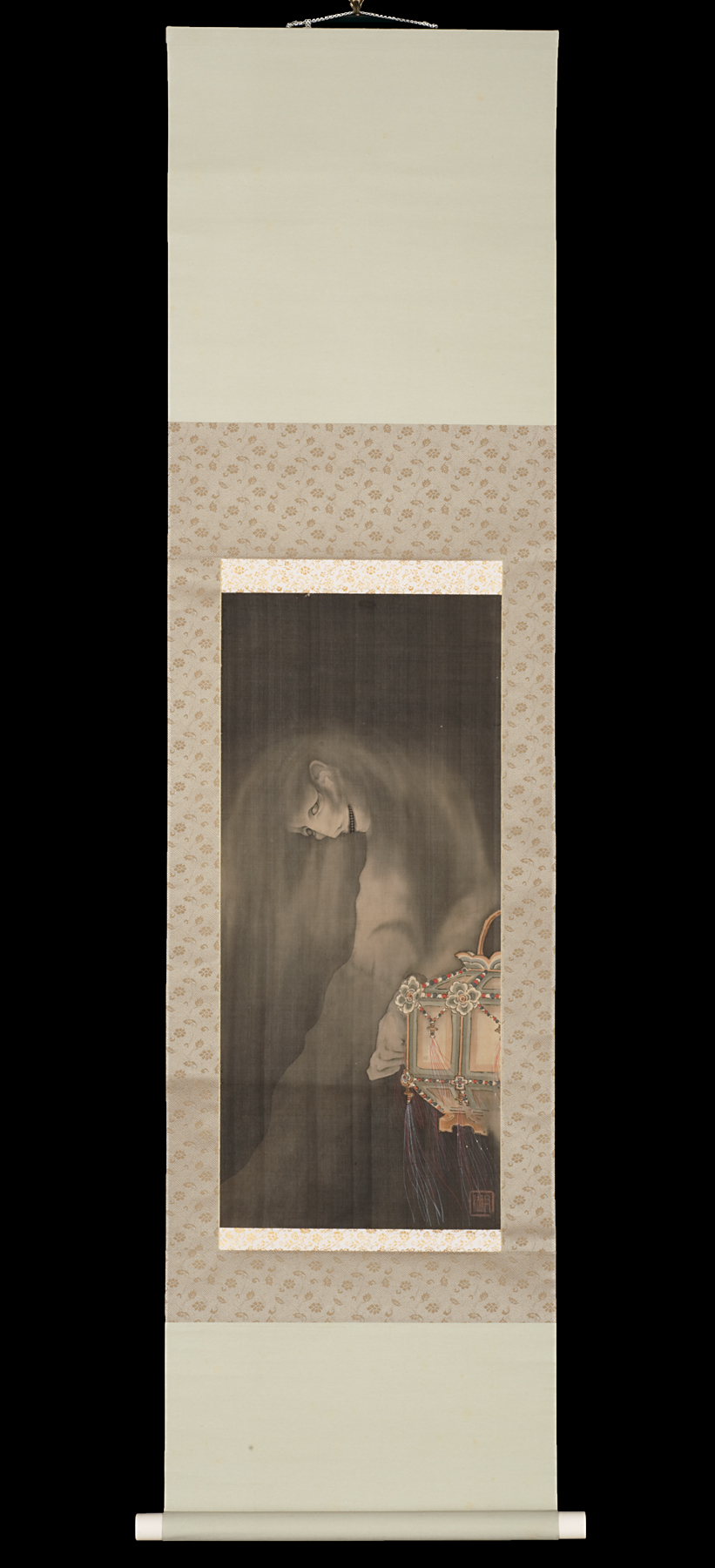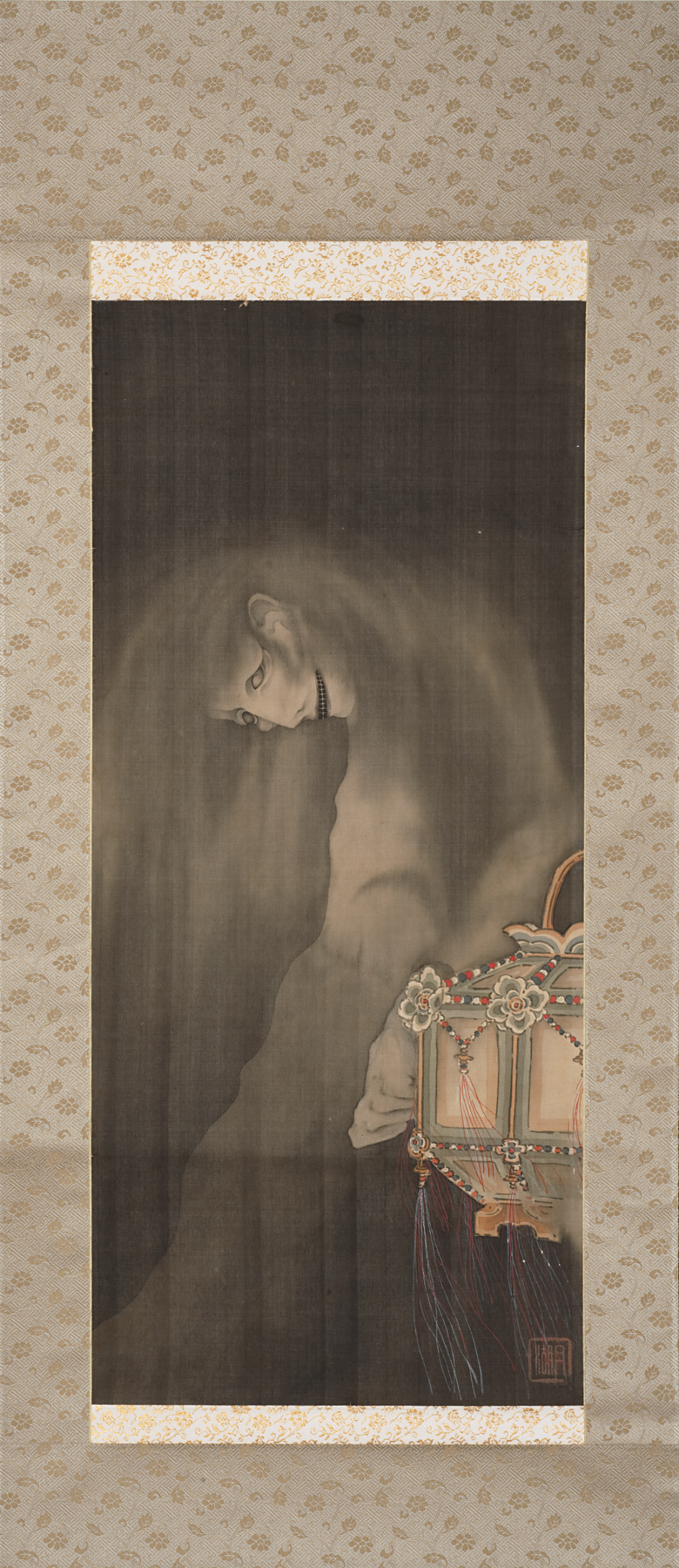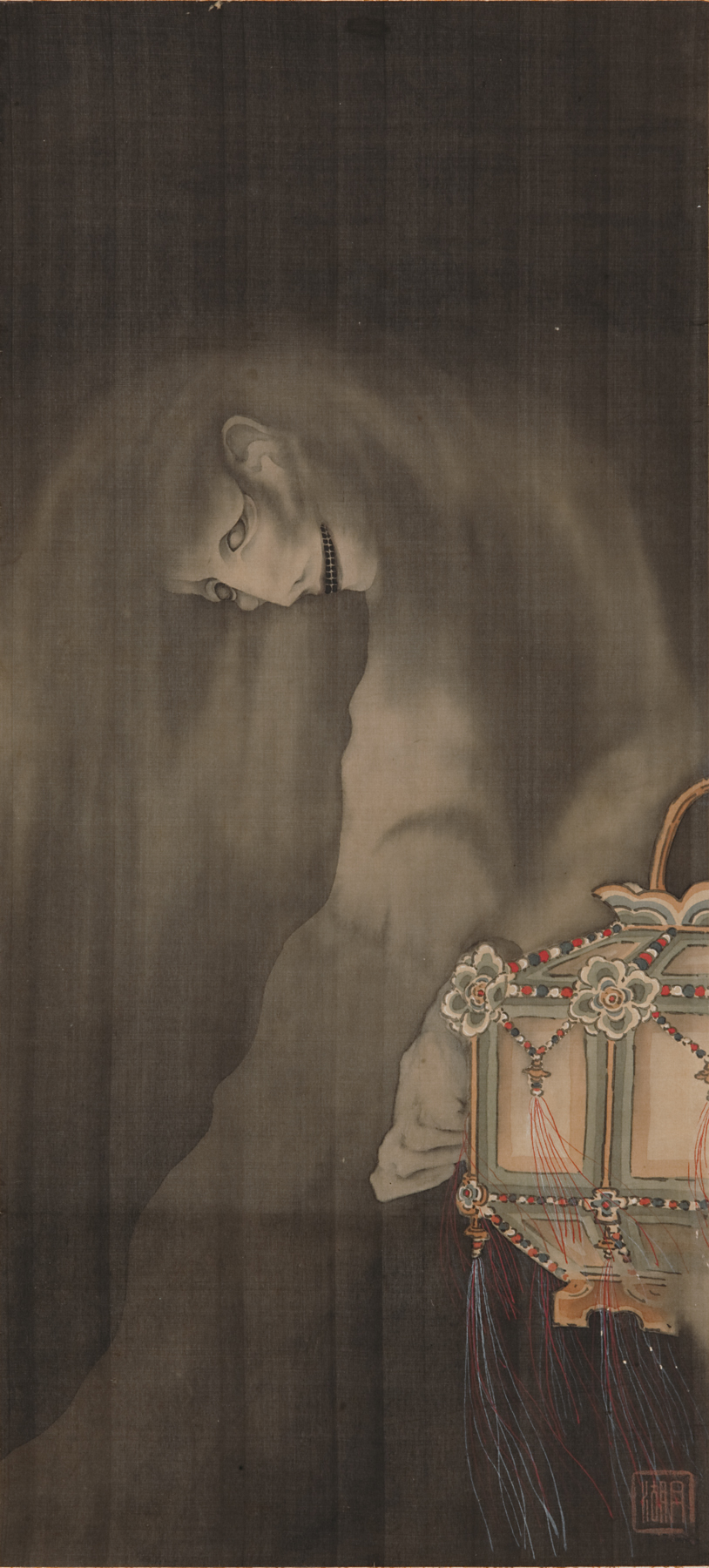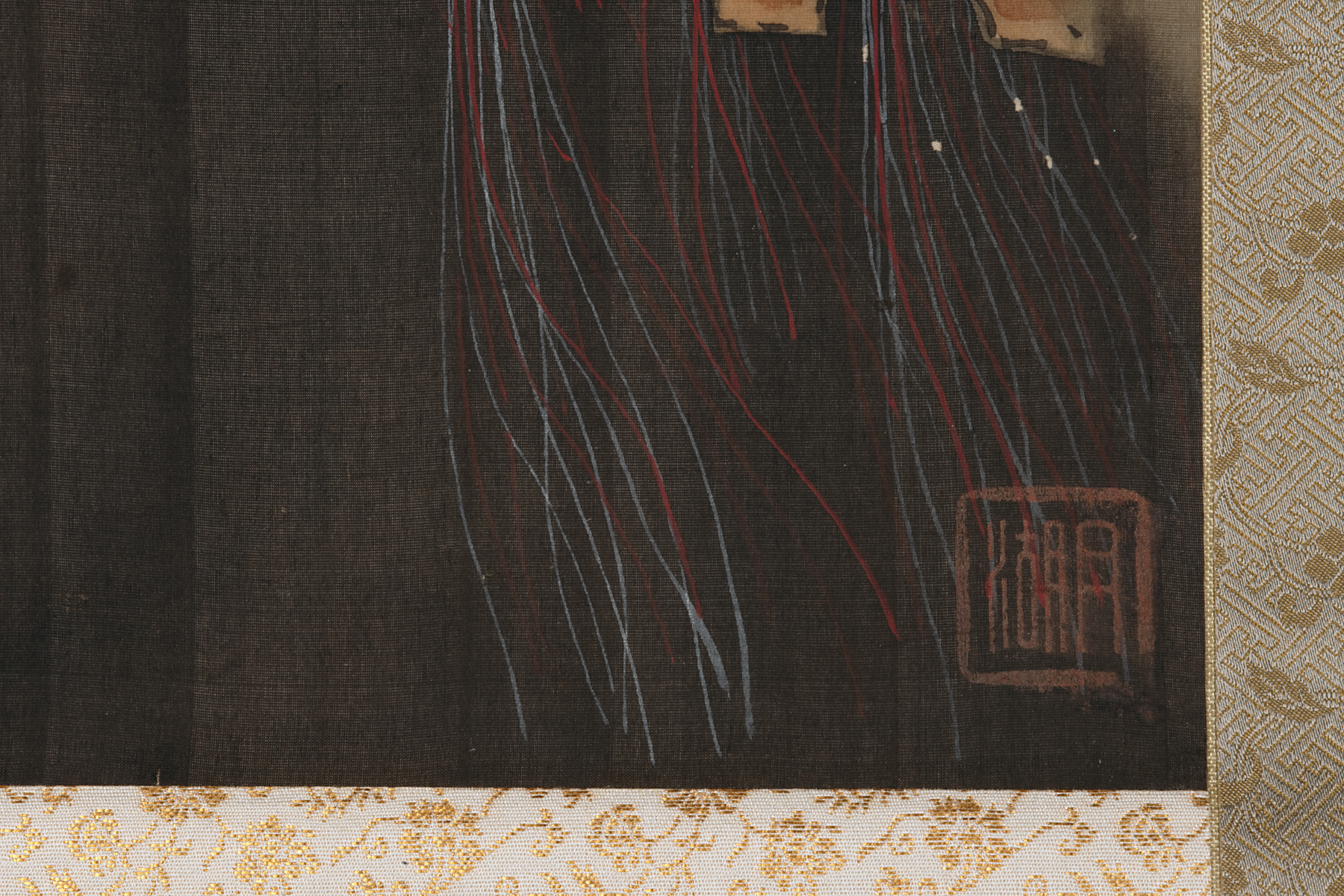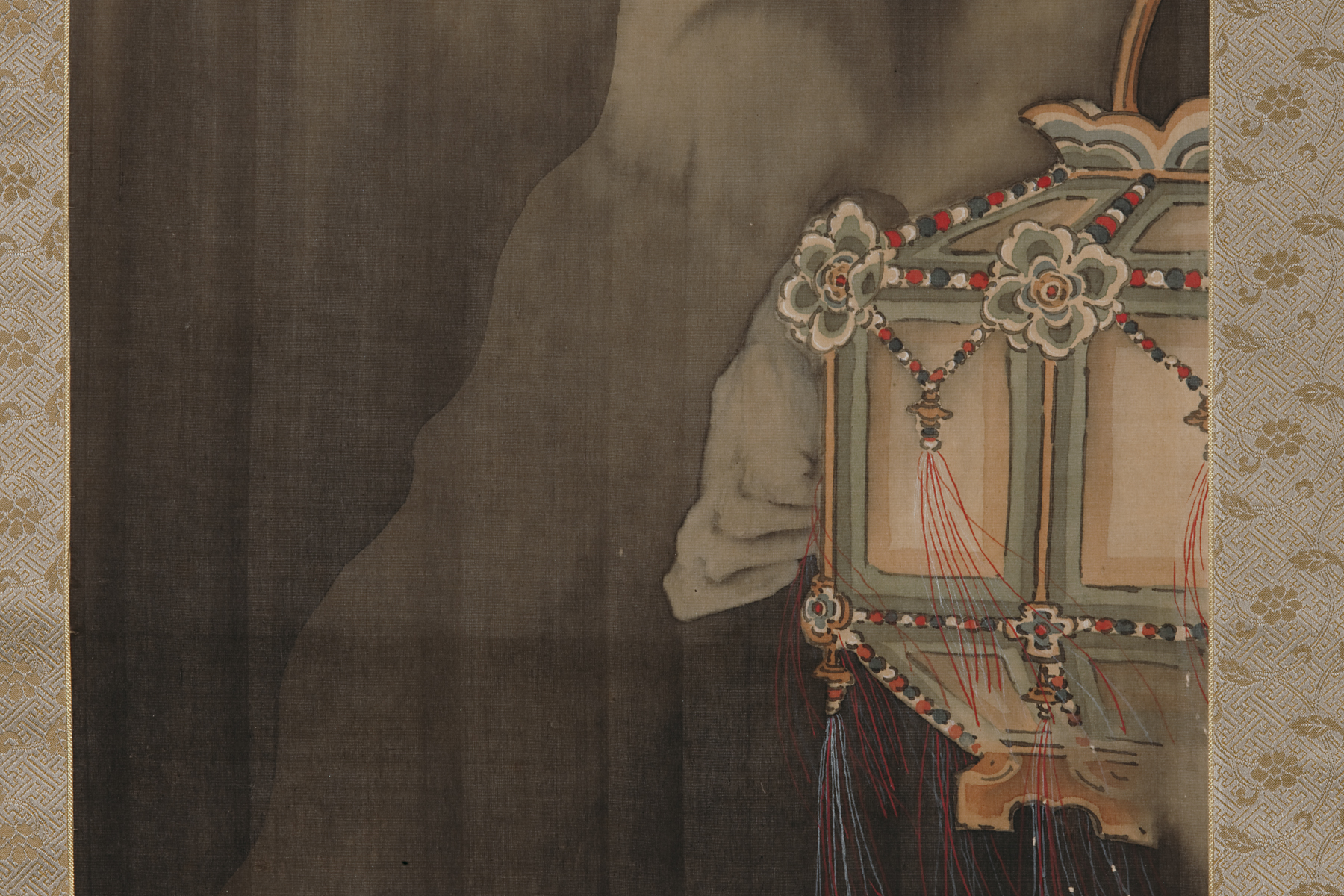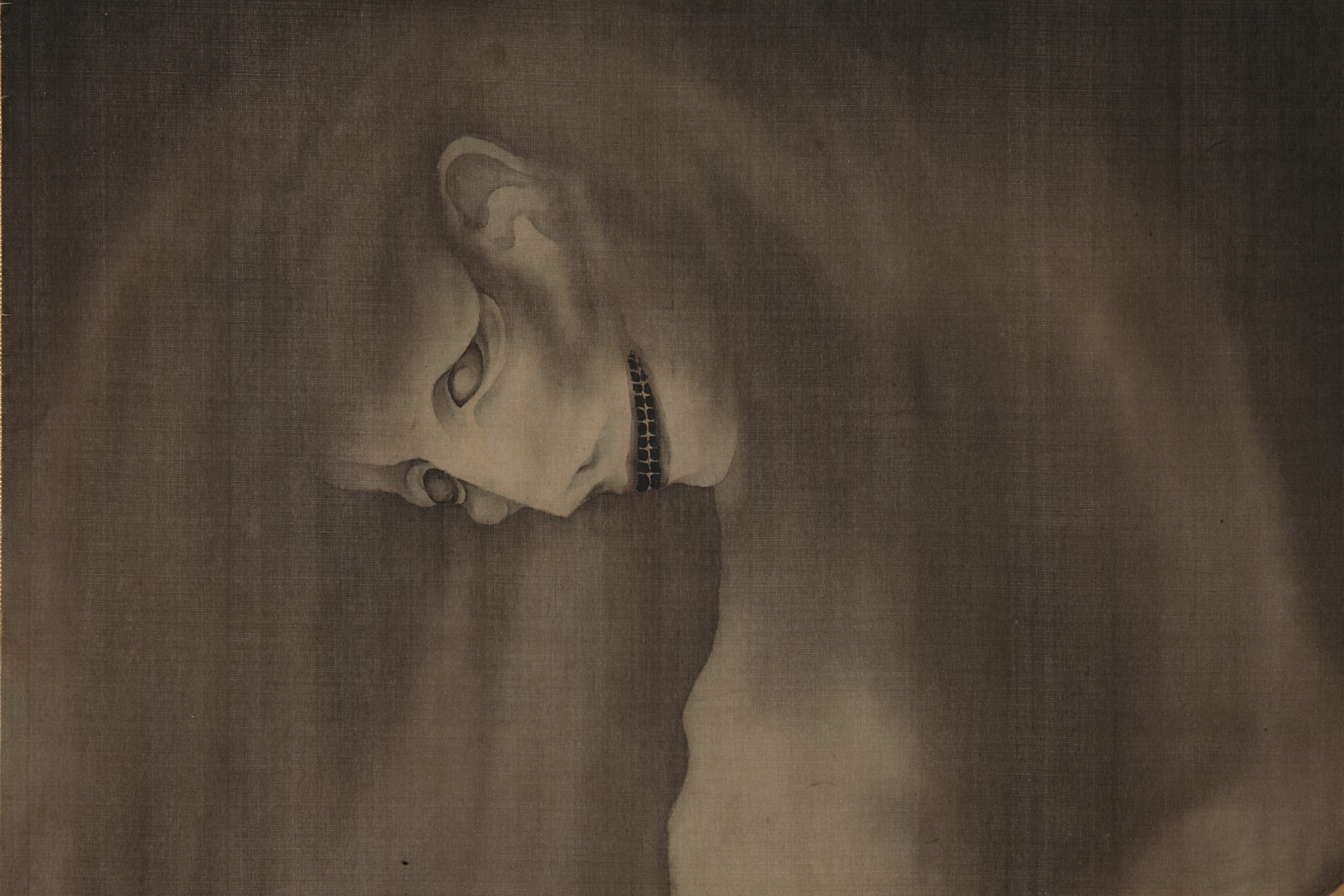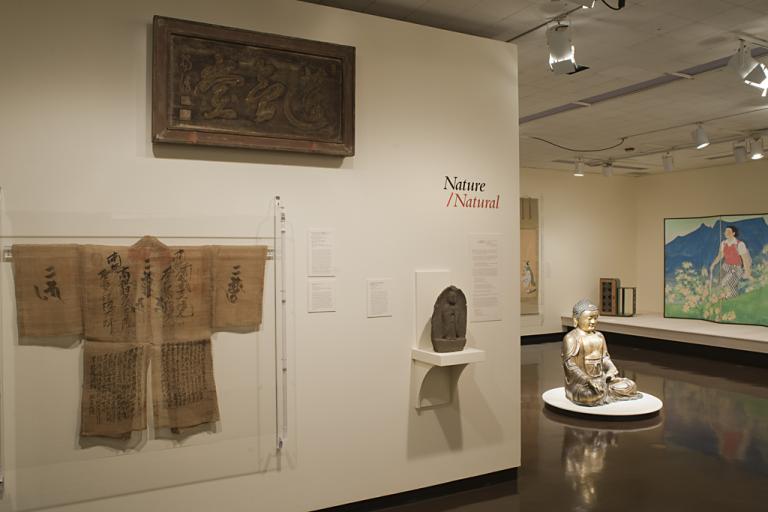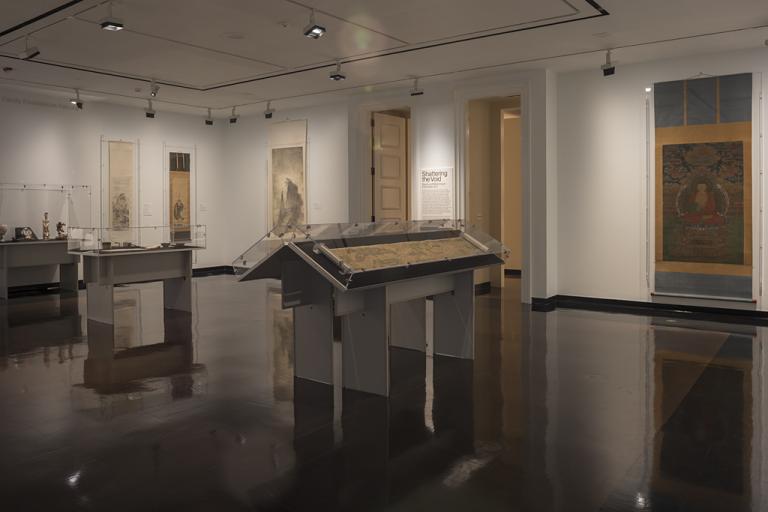Oiwa (The Lantern Ghost), Gekko
Artwork Overview
Gekko, artist
active late 1700s to early 1800s
Oiwa (The Lantern Ghost),
early 1800s, Edo period (1600–1868)
Where object was made: Japan
Material/technique: ink; silk; color
Dimensions:
Image Dimensions Height/Width (Height x Width): 65.4 x 29.2 cm
Image Dimensions Height/Width (Height x Width): 25 3/4 x 11 1/2 in
Mount Dimensions (Height x Width x Depth): 61 x 15 3/4 in
Mount Dimensions (Height x Width x Depth): 155 x 40 cm
Image Dimensions Height/Width (Height x Width): 65.4 x 29.2 cm
Image Dimensions Height/Width (Height x Width): 25 3/4 x 11 1/2 in
Mount Dimensions (Height x Width x Depth): 61 x 15 3/4 in
Mount Dimensions (Height x Width x Depth): 155 x 40 cm
Credit line: Museum purchase: R. Charles and Mary Margaret Clevenger Art Acquisition Fund
Accession number: 2010.0025
Not on display
If you wish to reproduce this image, please submit an image request
